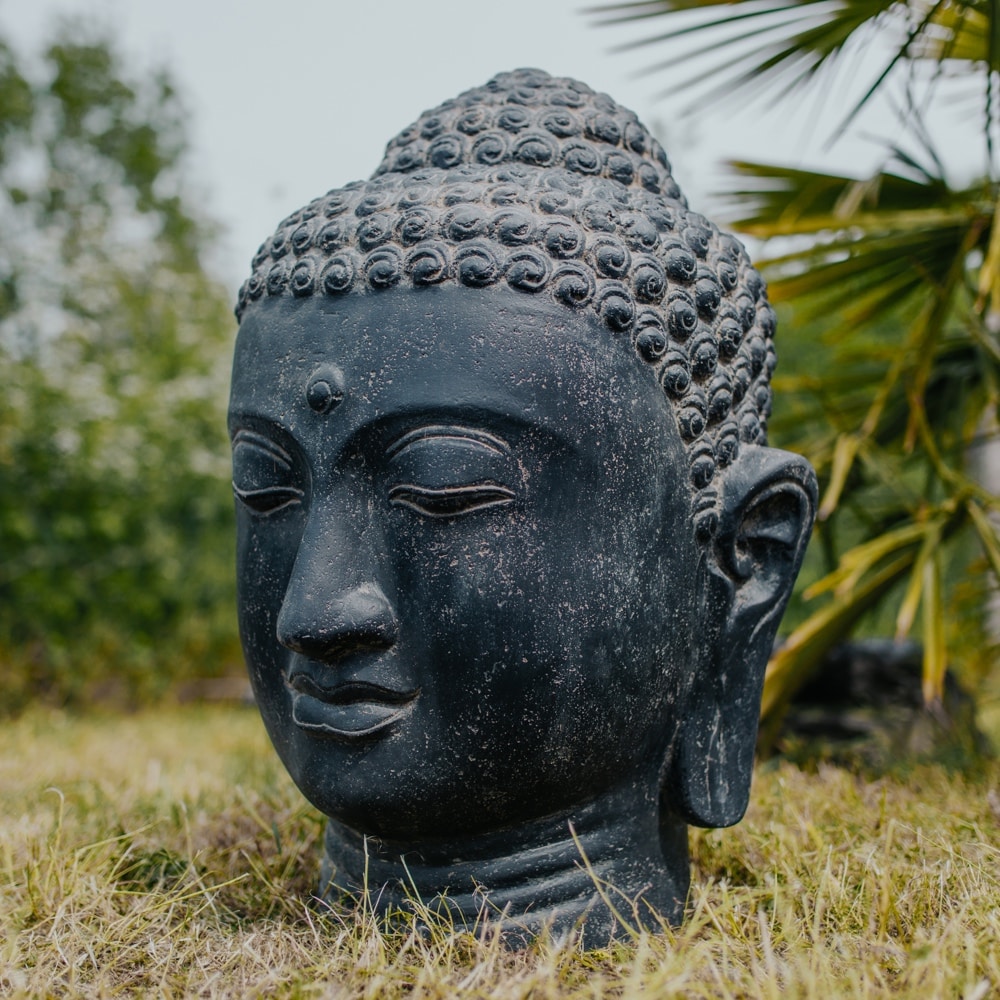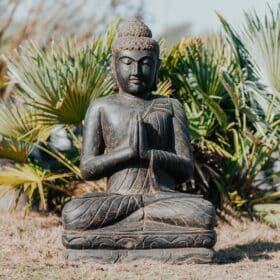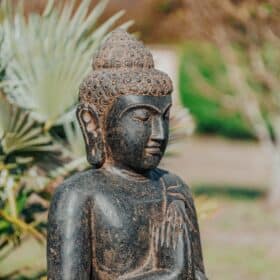05 54 54 75 41
You are here:
- Home
- Garden design
- Buddha statue
Buddha statue
Seated Buddha statue in antique black volcanic stone for outdoor garden - 45cm
165,00€Available on backorder
Antique black namaste seated Buddha statue 100cm for outdoor garden
415,00€Available on backorder
Standing Buddha statue in chakra position black antique 158cm
389,00€Available on backorder
1-metre black Buddha statue for outdoor use in natural stone
519,00€Available on backorder
Antique black Buddha head fountain garden statue 100cm
599,00€Available on backorder
1 metre black Buddha statue in meditation position for garden
415,00€Available on backorder
Large Buddha statue in natural volcanic stone Namaste 75cm
349,00€Available on backorder
Antique black Buddha head fountain garden statue 75cm
275,00€Available on backorder
Black Buddha statue 50cm - Outdoor garden decoration in volcanic stone
169,00€Available on backorder
Showing 1–9 of 73 resultsSorted by popularity
Buddha Statue: History, origins, buying guide…
Origins of Buddhism Buddhism has its roots in India, where Siddhartha Gautama, known as the Buddha, attained enlightenment in the 6th century BC.
His philosophy and teachings spread rapidly throughout Asia, influencing millions of people.
Buddhism advocates values such as compassion, wisdom and the quest for liberation from the cycle of rebirths.
This spiritual movement gave rise to a rich artistic tradition, of which the earliest iconographic representations of Buddha are a striking example.
These works of art were created not only to honor Buddha, but also to serve as visual reminders of his teachings and fundamental principles. Early representations of the Buddha The first Buddha statues appeared in India around the 1st century AD.
Prior to this period, the Buddha was often represented by symbols such as the Dharma wheel or the Bodhi tree.
Greco-Buddhist influence played a crucial role in the creation of the first anthropomorphic images of Buddha.
These early statues were characterized by idealized features, intended to represent spiritual perfection.
They served as models for subsequent generations of artists, setting stylistic and iconographic standards that endure to this day. The evolution of Buddha statues over the centuries Over the centuries, Buddha statues have evolved, reflecting the cultural and artistic influences of the regions where Buddhism has taken root.
In Southeast Asia, Thai statues are often slender and elegant, while in Japan, representations are generally more robust and simple.
Each region has developed its own distinctive style, enriching the world’s artistic heritage.
This stylistic diversity testifies to Buddhism’s ability to adapt and integrate into different cultures.
Buddha statues continue to inspire contemporary artists, who reinterpret these traditional images to suit modern sensibilities.
The statue of Buddha seated in black meditation, for example, is a fine illustration of this evolution. Symbolism and meaning
Postures and gestures Buddha statues adopt various postures and gestures, each with a specific meaning.
For example, the Dhyana Mudra, in which the hands are placed one on top of the other in the lap, symbolizes meditation and concentration.
Bhumisparsha Mudra, with one hand touching the earth, represents Buddha’s awakening.
These postures and gestures, known as mudras, are essential to understanding the teachings of Buddhism.
They serve as visual reminders of the different stages of Buddha’s life and the fundamental principles of his philosophy. Materials used Buddha statues are made from a variety of materials, from wood and stone to bronze and gold.
Each material brings a unique dimension to the work, influencing not only its aesthetics, but also its durability and symbolic meaning.
In modern times, materials such as resin are also used, making it possible to create works that are more accessible and less costly.
However, traditional materials remain highly prized for their authenticity and their link with ancestral artistic techniques.
A fine contemporary piece is the Buddha head garden statue. Symbols and attributes Buddha statues are often adorned with specific symbols such as the lotus, the dharma wheel and the Bodhi tree.
Each symbol has a profound meaning, enriching the statue’s spiritual message.
For example, the lotus represents purity and enlightenment, while the dharma wheel symbolizes the Buddha’s teachings.
These attributes contribute to the iconographic richness of Buddha statues, enabling devotees to better understand and meditate on the Buddha’s teachings.
They also add an aesthetic dimension, making each statue a unique work of art.
For a magnificent example, see the seated Buddha statue Namaste in natural stone. Cultural and spiritual impact
Influence on art and architecture Buddha statues have had a considerable impact on art and architecture throughout the world.
They have inspired generations of artists and architects, resulting in majestic temples and impressive works of art.
Pagodas, stupas and Buddhist monasteries all bear witness to this influence.
In Asia, Buddha statues are often integrated into grandiose architectural complexes, where they take center stage.
These structures are designed to encourage meditation and contemplation, offering visitors a space of peace and serenity. Role in spiritual practices Buddha statues play a crucial role in the spiritual practices of Buddhists.
They serve as focal points for meditation, helping devotees to focus their minds and deepen their understanding of the Buddha’s teachings.
The statues are also used in rituals and religious ceremonies.
In addition, they serve as visual reminders of the principles of compassion, wisdom and non-attachment.
For many Buddhists, having a Buddha statue in their home or place of worship is a source of inspiration and spiritual guidance. Buddha statues in the contemporary world Today, Buddha statues continue to exert a significant influence, not only in Buddhist communities, but worldwide.
They are often used as decorative objects, symbolizing peace and tranquility.
Their presence in gardens, homes and public places testifies to their universal appeal.
Contemporary artists are also reinterpreting these statues, creating modern works that draw on ancient traditions while adding a personal touch.
This fusion of past and present underlines the permanence and relevance of the Buddha’s teachings in our modern world.
A fine example of this trend is the statue of Buddha seated in meditation with mala necklace.




















